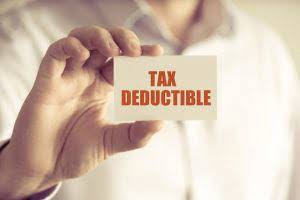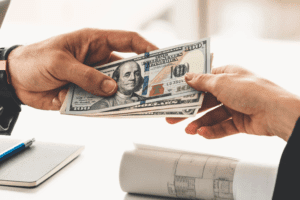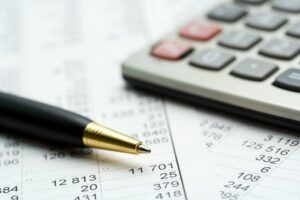
Self-ordering kiosks allow customers to place orders on their own while you cut staffing costs or move employees over to tasks that make more money for your business. To learn more about the benefits of self-ordering kiosks, check out the free ebook How the Self-Ordering Restaurant Kiosk Is Changing the Way We Eat Out. Every successful restaurant manager will tell you that routine inventory control has been a reason for their success. It shows what inventory isn’t moving, what has been over-ordered, which foods are spoiling the fastest, and reveals if any theft is going on. If you don’t currently have a line of credit, talk to your financial institution. The processes you set up in steps one through four (accurate numbers and forecasts, lean expenses, and solid receivables and payables) will help make your application attractive to lenders.
Five Reasons to Switch From Your Current Point of Sale Software
- A falling accounts payable, on the other hand, reveals that the company is clearing its earlier obligations faster than buying new products on credit.
- Ensuring your information is accurate is the basis of making informed restaurant finance decisions and improving your cash flow.
- It’s also easier to grow your business if you already have enough positive cash flow to cover the added expenses.
- Moreover, expenses and overhead costs can be recurring and inflexible, requiring businesses to find ways to optimize their spending while still meeting operational needs.
This not only minimizes human error but also saves time, as staff can quickly tick off tasks on a tablet or smartphone. It involves tracking and controlling the flow of cash in and out of the establishment, ensuring that enough cash is on hand to cover expenses, and safeguarding against loss or theft. Effective cash management can mean the difference between a thriving restaurant and one that struggles to keep its doors open. In this section, we delve into the significance of understanding cash flow and implementing measures to reduce theft and errors in restaurants. Regularly review cash flow statements to identify trends, anticipate fluctuations, and make informed decisions.
Perform Period End Financial Reviews

Once you’re confident that you have accurate historical numbers, analyze them regularly. Monthly or even weekly financial check-ins can help you pivot strategies promptly. Drawing from this historical data, you can better anticipate the future for your restaurant’s finances.

Employee Time Management- 5 Software Solutions To Improve Productivity
- Nicole is a Principal at SVA Certified Public Accountants working primarily with closely-held businesses and individual clients.
- If your restaurant has debt, manage it strategically to avoid cash flow strain.
- By allocating a designated amount to petty cash and replenishing it as needed, establishments can maintain liquidity while minimizing the risk of overspending and cash shortages.
- Making informed decisions based on these analyses can lead to higher revenue and improved profit margins.
- Quick resolution of these issues helps maintain the integrity of your cash management system and prevents small discrepancies from turning into larger financial losses.
- This section explores key financial metrics used in it and how they can be leveraged to assess a company’s financial health.
It also takes employees away from the store for long periods, which could negatively impact the customer experience if you are short-staffed. If you choose armored pick-ups instead, you may have to restaurants maintain cash flow deal with the hassle of missed pick-ups, which interrupts your restaurant’s normal operations. Write out every detail of the cash handling procedures your restaurant staff should follow. Also, include information about which managers are in charge of which cash handling steps.
Reheating Food Temperatures- Tips to Maintain Food Safety
Cash flow is a measurement of the amount of cash that comes into and out of your business in a particular period of time. When you have positive cash flow, you have more cash coming into your business than you have leaving it—so you can pay your bills and cover other expenses. The concept of having “enough money to meet your financial obligations” is also known as working capital. Cash flow forecasting for restaurants enables proactive decision-making, allowing restaurant owners to respond swiftly to changing market conditions. Whether it’s adapting to seasonal fluctuations, implementing cost-saving measures, or investing in new revenue streams, accurate forecasting ensures timely and informed choices that drive business growth. Expenses will be broken down into fixed costs, such as your rent, loan payments, and insurance, and variable costs, such as payroll and food expenses.


Accounts payable- This refers to the short-term obligations of a company towards its suppliers and/or creditors who have not yet been paid. An increase in accounts payable indicates that the company is buying more on credit law firm chart of accounts than on cash. A falling accounts payable, on the other hand, reveals that the company is clearing its earlier obligations faster than buying new products on credit. It is categorized as a current liability in the balance sheet and is critical for managing the cash flow of the organization.3. Assets- These are company resources possessing a future economic value and this value must be expressible in dollar terms. For a restaurant, buildings, POS equipment, kitchen equipment, cash, or accounts receivable can all be classified as assets.

By using cash management software, restaurants can streamline their financial operations, reduce errors, and gain better insights into their financial position. A cash management software is a tool designed to help businesses track, manage, and optimize their cash flow. The Balance Sheet is one of the most important financial statements as it shows the business’s true worth. If the Balance Sheet is inaccurate, the chances are that your P&L and Cash Flow statement are inaccurate as well, and more times than not, the how is sales tax calculated result is not in your favor as expenses are missing. Inaccuracies could lead to cash flow problems, so consistently verifying the balances on key accounts is critical to your business. Continuously monitor your food costs and adjust your menu pricing accordingly so you can maintain positive cash flow.
55 total views, 1 views today